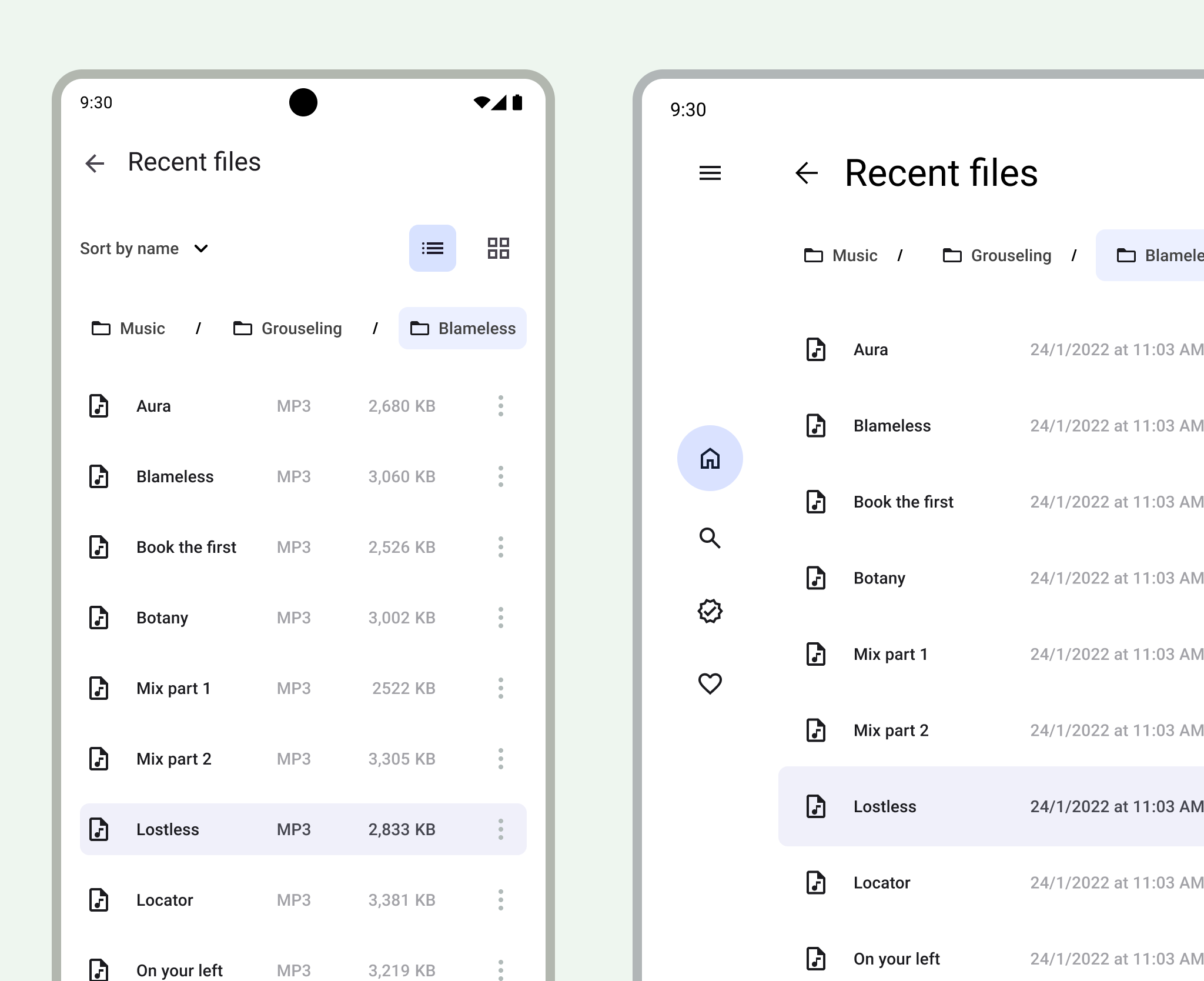التصميم التكيّفي هو ممارسة تصميم تنسيقات تتكيّف مع نقاط توقّف وأجهزة معيّنة. عادةً ما نأخذ عرض الجهاز في الاعتبار لتحديد المكان الذي يجب أن يتغير فيه التصميم أو يتكيّف. يستخدم كل من الويب وAndroid مفاهيم التصميم السريع الاستجابة، مثل الشبكات والصور المرنة، لإنشاء تخطيطات تستجيب بشكل أفضل لسياقها.

للاطّلاع على إرشادات التصميم بشأن تكييف التخطيطات مع أحجام الشاشات الموسّعة، يُرجى قراءة دليل المطوّرين التوافق مع أحجام الشاشات المختلفة في Compose وصفحة تطبيق التخطيط في M3. يمكنك أيضًا الاطّلاع على معرض الصفحات الأساسية للشاشات الكبيرة على Android للحصول على أفكار حول تصميمات الشاشات الكبيرة وتنفيذها.
على الرغم من أنّه ليس من الضروري أن يكون كل تطبيق متاحًا على كل أحجام الشاشات، إلا أنّ ذلك يمنح المستخدمين المزيد من الحرية فيما يتعلق ببيئة العمل وسهولة الاستخدام وجودة التطبيق.
- يمكنك تصميم الشاشات الرئيسية (التي توضّح المفاهيم الأساسية أو تطبيقك) مع أحجام الفئات كنقاط توقّف لتكون بمثابة إرشادات.
- يمكنك أيضًا تصميم المحتوى ليتجاوب مع أحجام الشاشات المختلفة من خلال تحديد طريقة عرض المحتوى، أي ما إذا كان يجب أن يكون محدودًا أو موسّعًا أو أن يتم إعادة ترتيبه.
لمزيد من المعلومات حول التنسيقات، يمكنك الاطّلاع على صفحة "فهم التنسيق" في التصميم المتعدد الأبعاد 3 (M3).

